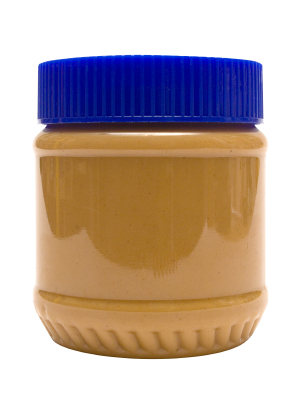 We have a guest blogger today. Dennis Pacheco is Web Content Coordinator for ChelseaGreen.com, the Web site of premier sustainability publisher Chelsea Green Publishing. Their books include Sharing the Harvest and Fresh Food from Small Spaces, and they distribute contra-farmer Joel Salatin's books (Everything I Want to Do Is Illegal and others).
We have a guest blogger today. Dennis Pacheco is Web Content Coordinator for ChelseaGreen.com, the Web site of premier sustainability publisher Chelsea Green Publishing. Their books include Sharing the Harvest and Fresh Food from Small Spaces, and they distribute contra-farmer Joel Salatin's books (Everything I Want to Do Is Illegal and others). Readers of the Green Luvin' blog probably don't need another inducement to "eat local." Like Chelsea Green's audience, you're probably hip to the whole concept: support local farmers, enrich your community, connect directly with your food, avoid GMO as much as possible (Although they are difficult, if not impossible, to avoid entirely—soy products, anyone?), cut carbon emissions and reduce demand for our dwindling supplies of dirty fossil fuels, etc., etc. But just in case you're having trouble making the case with some of your less sustainability-minded friends, here's a good one: don't get really sick and possibly die.
You hear news reports all the time about Salmonella outbreaks in spinach or some other product that probably originated halfway around the country or halfway around the world, but what exactly is it?
While not always fatal, it's also not pleasant.
From CDC.gov:
Salmonellosis is an infection with bacteria called Salmonella. Most persons infected with Salmonella develop diarrhea, fever, and abdominal cramps 12 to 72 hours after infection. The illness usually lasts 4 to 7 days, and most persons recover without treatment. However, in some persons, the diarrhea may be so severe that the patient needs to be hospitalized. In these patients, the Salmonella infection may spread from the intestines to the blood stream, and then to other body sites and can cause death unless the person is treated promptly with antibiotics. The elderly, infants, and those with impaired immune systems are more likely to have a severe illness.
Last Friday, the New York Times reported on the latest headline-grabbing outbreak, this time from peanut butter that originated from a plant in Georgia.
From the New York Times:
For the nation’s grocery shoppers, the list of foods that might contain salmonella-tainted peanut butter has grown so quickly that keeping up seems daunting.
There are boxes of Valentine’s candy, frozen cookie dough and dog biscuits, chicken satay, peanut butter cups and stuffed celery.
Many of the products are sold as supermarket brands or under lesser-known national labels, but the list also has some of the more popular snacks on the shelf, like Little Debbie sandwich crackers, Famous Amos cookies and energy snacks from Clif Bar and NutriSystems.
The Food and Drug Administration has listed almost 130 products that have been recalled, but federal officials say the list is likely to grow as the investigation continues. The large and varied list of products points up the many layers involved in producing packaged foods.
“I don’t think we can determine how many more” products will be recalled, Stephen F. Sundlof, director of the Center for Food Safety and Applied Nutrition at the food and drug agency, told reporters on Wednesday.
Out of 486 cases of salmonella illness reported to the Centers for Disease Control and Prevention, 6 people have died and 107 have been hospitalized. The most recent person sickened fell ill on Jan 8. Since it takes up to three weeks for cases to be reported to the disease agency, more are expected.
Consumers who have packages of food made with peanut products should check with the manufacturer by Web site or telephone and consult the F.D.A. recall list at fda.gov. Anyone who is not sure about a product should not eat it, federal officials said.
[...]
The plant also produced peanut paste, a more concentrated product used in candy, crackers and many other kinds of foods. Tracking how the paste travels through the food supply can be challenging, because several companies can be involved in making the final food. For example, one manufacturer might coat the paste in chocolate and make a peanut butter cup, which is then sold to another company that mixes it into ice cream that may or may not also contain peanut butter. A grocery chain might buy that ice cream and sell it under a private label.
Volume, wide distribution and a complicated supply chain are not the only issues. Salmonella can survive for a long time in a closed container of peanut butter.
“The piece that hasn’t come out yet is that peanut butter isn’t like spinach or ground beef because it has a really long shelf life,” said Caroline Smith DeWaal, food safety director for the Center for Science in the Public Interest.
So remember: eat local. Contribute to the local economy, make an impact on CO2 emissions, avoid GM foods, and greatly reduce the risk of suffering a pretty lousy fate at the hands of an industrial food supply contaminant.

2 comments:
Hey,
I'd like to speak with you about this blog. I've been doing some research for my own site and would like to share with you an interesting blog idea. Get back to me at your earliest convenience.
Thanks!
-Josh
jlandon [@] maacenter.org
Interesting story you got here. It would be great to read a bit more about this matter. Thnx for giving this material.
Sexy Lady
English escort
Post a Comment